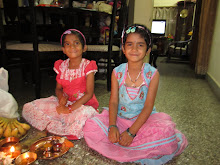Chennapatna is known as the Gombegalu Ooru (the city of toys). The town is 60 kms from Bangalore and is located across River Kanva on the Bangalore-Mysore highway.The town is famous for its toys, so much so that it has earned worldwide fame. These toys had almost gone into oblivion, thanks to the flooding of Chinese toys. The Chinese toys were cheap and they were painted in eye-catching colours.
More than 6,000 artistes are dependent on this trade and there are more than 50 small factories and 250 houses manufacturing these toys.These artisans are given support and training by the Karnataka Handicrafts Development Corporation. The artisan training institute also provided training to artisans. The geographical indicator (GI) tag has been given to these toys. What this means is that the toys cannot be copied elsewhere. To that extent the toys are safe from copying.
He called artisans from Persia
to his kingdom in the later part of the 18th century and set up a toy factory in Chennapatna. He asked the Persian artisans to train locals in the art of toy making. This was born the Chennapatna toys.
The Persian artisans initially used Ivory to make toys. Subsequently, they used rosewood and sandalwood. Today, rubber wood and cedar is sued extensively to make these toys.
In Bangalore
,these toys are sold outside the Cauvery Emporium on
A word of caution though. Not all artisans can make Dasara dolls. Only 400 of he 6,000 artisans are engaged in making Dasara dolls. The rest are engaged in making regular Chennapatna dolls.
However, things are not all rosy for these artisans. The price of lacquer, which is used in making these dolls, have shot up from Rs. 700 to Rs. 1,750 in a span of eleven months. The advent of new toys and mechanical and electronic toys and the entry of big businesses into this sector have made life difficult to these artisans.
The danger from Chinese toys is still not ever. The Chinese toys are still cheap and they are flooding the local market. There is a need to further streamline the marketing of these toys and ensure that they are made available to the common man.

No comments:
Post a Comment